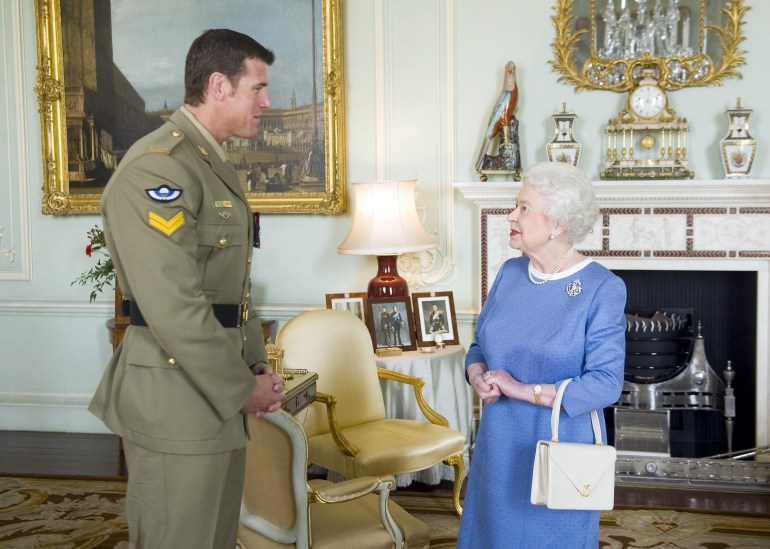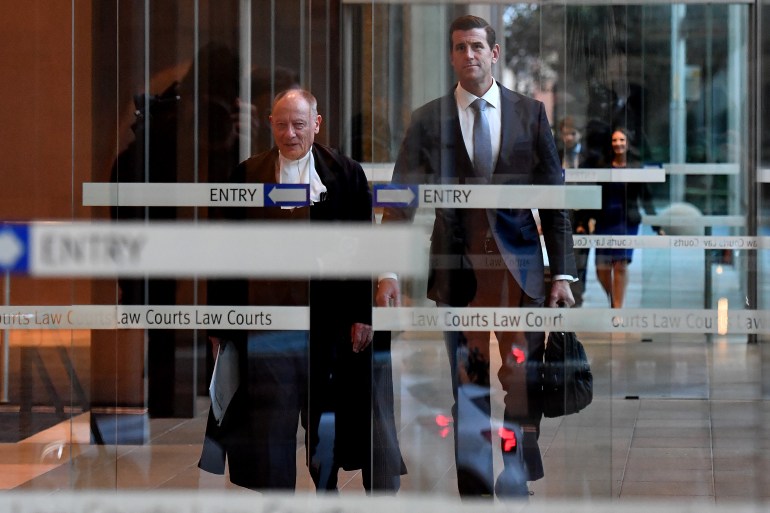When details of alleged war crimes involving Ben Roberts-Smith first circulated in the Australian media in 2017, many found it unthinkable that their country’s most decorated living soldier with a dedicated display in the Australian War Memorial for his service in East Timor, Iraq and Afghanistan, could be guilty.
After reports appeared in The Age, the Sydney Morning Herald and Canberra Times newspapers, Roberts-Smith launched a defamation case in an apparent effort to clear his name.
But on June 1, he emerged from civil proceedings in a Sydney court with his reputation in tatters after Judge Anthony Besanko concluded he “had difficulty accepting the applicant’s evidence on any disputed issue” and ruled that the newspapers’ allegations were, on the balance of probabilities, true.
The former special forces corporal was “complicit in and responsible for murder”, the judge said in his full judgement released a week ago.
“Roberts-Smith’s public image accords with the very ingrained image of the understated Aussie hero and this gentle giant mythology,” Kit Messham-Muir, a professor in art at Curtin University’s School of Media, Creative Arts and Social Inquiry, and an expert in the art and visual culture of war and conflict, told Al Jazeera.
“It says a lot about Aussie bloke masculinity and the idea of the ‘soft heart and hard fist’. This made him seem very palatable as the public face of the Australian soldier and he was seen as beyond reproach.”
Australians have long venerated their military and their heroes.
Anzac Day is one of Australia’s most important national holidays.

Anzac, which stands for the Australian and New Zealand Army Corps, referred originally to the ill-fated World War One effort to capture the Gallipoli Peninsula on April 25, 1915, which left thousands of Australian and New Zealand soldiers dead.
But the holiday now commemorates all Australians and New Zealanders who served and died in wars, conflicts and peacekeeping missions around the world, built on the idea of heroic sacrifice for a greater good.
Messham-Muir says Anzac Day commemorations have grown in popularity in recent years, even as the number of veterans from the Second World War and other major conflicts such as the Vietnam War had declined.
Experts say the idea of honouring the war hero gained renewed momentum under John Howard, who was prime minister between 1996 and 2007 and encouraged respect for the military as a new kind of neo-patriotism. Howard was also the prime minister who sent Australian troops to Iraq and Afghanistan, giving him a political interest in linking national identity to foreign military adventures.
Given the strong reverence for the military, the Roberts-Smith case has polarised Australia, leading to difficult questions about how the country’s national identity is tied to its armed forces.
“The Roberts-Smith defamation case is the latest and most startling episode in the ongoing story of allegations that Australian personnel committed war crimes while deployed to Afghanistan,” Dean Aszkielowicz, a senior lecturer and fellow of the Asia Research Centre at Murdoch University in Perth, told Al Jazeera.
“Details of these allegations first appeared in several press articles and an official inquiry by the Inspector-General of the Australian Defence Force, the result of which is known as the Brereton report. To many in the Australian public, and some international observers, the details contained in the Roberts-Smith case and the Brereton Report of actions allegedly taken by Australian personnel, have severely tarnished the reputation of the Australian Defence Force.”
The Brereton report, which was released in heavily-redacted form, in 2020 after a four-year inquiry, shocked the Australian public after revealing a culture of unlawful killings, gruesome initiation rituals and cover-ups by the Australian military in Afghanistan from 2005 to 2016.
The alleged war crimes are now in the hands of the Office of the Special Investigator, which in March charged a 41-year-old former member of the special forces for murder – over a killing in Afghanistan – marking the first time a serving or former member of the armed forces had been charged with a war crime.
Tarnished record
Roberts-Smith’s defamation case included four killings in Afghanistan, including two alleged murders that took place in 2009 at a compound known as Whiskey 108 where two local men were found huddled in a tunnel.
After the unarmed men surrendered, the court heard, Roberts-Smith ordered a junior serviceman to shoot one of the men and throw the other, who had a prosthetic leg, to the ground before shooting him with a machine gun. The prosthetic leg was allegedly taken and kept as a souvenir by another soldier and used as a drinking vessel at the Fat Ladies’ Arms – an Australian bar at the special forces’ base.
Roberts-Smith was also accused of kicking an unarmed Afghan villager named Ali Jan, who was handcuffed, off a cliff into a dry riverbed in the village of Darwan. When the man was found to be still alive, Roberts-Smith reportedly ordered a junior officer to shoot him – an allegation the judge also found, on the balance of probabilities, to be true.
“For many Australians, the country’s military and its military history play an important role in the national identity,” Aszkielowicz said. “While Australia has been engaged in difficult conflicts during its history, for the most part, the public has regarded the country’s war record as relatively clean, with few controversies relating to the conduct of Australian personnel and the laws of war.”

He noted that while some high-profile media and political figures sought to defend Roberts-Smith’s reputation when allegations against him first appeared, the former corporal seems destined to be a divisive figure “regarded by most as a notorious war criminal and by others as an unfairly-treated war hero whose actions have more to do with failures of leadership higher up and the necessities of war”.
Roberts-Smith’s downfall is all the more precipitous for the accolades he had received and the esteem in which he was held.
In addition to the Victoria Cross and Medal for Gallantry, the soldier was the subject of a special exhibition at the Australian War Memorial, including his uniform and two specially-commissioned portraits.
Since the defamation judgement was announced, the Greens Party has called for Roberts-Smith’s uniform to be removed and the paintings – one of which, Pistol Grip, depicts him in a fighting stance – have been at the centre of a fierce debate over whether they should remain on display.
In notes accompanying Pistol Grip, the work’s artist Michael Zavros is quoted saying that when he asked Roberts-Smith to pose in a fighting stance, he seemed to go into “this whole other mode. He was suddenly this other creature and I immediately saw all these other things. It showed me what he is capable of … it was just there in this flash”.
When approached for comment by Al Jazeera, the Australian War Memorial referred to a statement by its chair, Kim Beazley, posted on its website.”The Memorial acknowledges the gravity of the decision in the Ben Roberts-Smith defamation case and its broader impact on all involved in the Australian community,” the statement said. It added that the memorial is “considering carefully the additional content and context” to be included in displays of items relating to Roberts-Smith, including his uniform, equipment, medals and associated artworks.
“The Memorial acknowledges Afghanistan veterans and their families who may be affected at this time,” it concluded.

Messham-Muir argues that even if the portraits are removed temporarily, it is important they remain on display over the longer term.
“The portraits form the foundation of a conversation about the representations of our military in contemporary art and how our overseas institutions deliver back to us,” he said.
“They tell a really interesting story about how we create heroes and what we do through our own retelling of these stories.”
Sumber: www.aljazeera.com
 Skip to content
Skip to content

